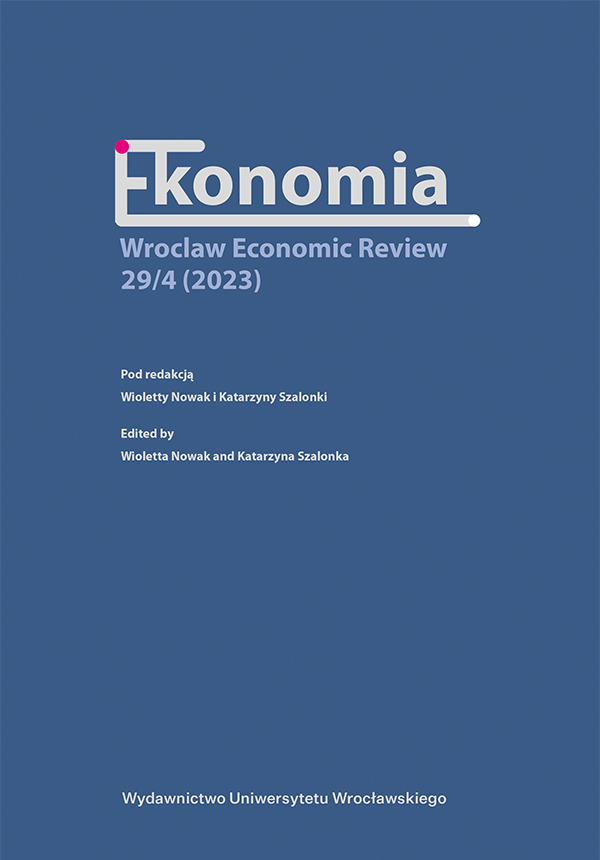

Articles

The Carbon Border Adjustment Mechanism (CBAM) is a new instrument of the EU’s European Green Deal policy. It is intended to contribute to the reduction of greenhouse gas emissions in the world. The CBAM provides for a levy (tax) to be imposed on energy-intensive imports which heavily pollute the environment. The aim of the study was to provide a quantitative assessment of the commodity and geographical coverage of the CBAM in Polish imports. Several indicators were calculated to assess the possible negative impact of CBAM. These indicators can be interpreted as rough measures of the effects of the tax. They were compared with similar indicators calculated by other authors for the whole EU.
This paper is a continuation of earlier studies of other researchers who analyzed CBAM coverage and possible implications, while adopting assumptions other than those finally included in the CBAM Regulation.
The key findings and main conclusions are as follows: Negative effects of the CBAM will be concentrated on several product groups: steel products, chemicals, polymers, and aluminum. These products accounted for as much as 96% of Poland’s external import subject to the levy. The scale of the final effects of the tax will depend mainly on the level of ETS allowance prices and the intensity of adjustments made by domestic companies and foreign partners. The study ends with two conclusions: First, manufacturers have several years to prepare a strategy to limit the negative effects of the levy (it will be charged as of 2026), but they should start the adjustments as soon as possible. Second, the carbon footprint of a product (as low as possible) is becoming an increasingly important factor in the manufacturers’ international competitiveness.
The method of descriptive analysis as well as statistical methods were used.
Coase, R.H. (1960). The problem of social cost. The Journal of Law & Economics, 3, 1–44.
Chepeliev, M. (2021). Possible implications of the European Carbon Border Adjustment Mechanism for Ukraine and other EU trading partners. Energy Research Letters, 2(1), 1–6. https://doi.org/10.46557/001c.21527.
Darvell, A. (2022). The EU’s Carbon Border Adjustment Mechanism Moving Towards the Final Stage of Legislation Process. Tokyo: Mitsui & Co. Global Strategic Studies Institute.
Dumitru, A., Kölbl, B., Wijffelaars, M. (2021). The Carbon Border Adjustment Mechanism Explained. Retrieved March 10, 2023, from https://www.rabobank.com/knowledge/d011297275-the-carbon-border-adjustment-mechanism-explained.
European Commission. (2021a). Remarks by Executive Vice-President Timmermans (2021, July 15). Retrieved March 1, 2023, from https://www.ec.europa.eu/commission/presscorner/detail/en/SPEECH_21_3724.
European Commission. (2021b). Commission Staff Working Document. Impact Assessment Report Accompanying the Document Proposal for a Regulation of the European Parliament and of the Council Establishing a Carbon Border Adjustment Mechanism. Brussels, SWD (2021), 643 final, part 1/2.
Grądalski, F. (2002). Teoretyczne podstawy proekologicznego systemu podatkowego. Gospodarka Narodowa, 197(10), 25–51.
Hufbauer, G.C., Kim, J., Schott, J.J. (2021). Can EU Carbon Border Adjustment Measures propel WTO climate talks? Peterson Institute for International Economics Policy Briefs, 21–23, 1–13.
Kawecka-Wyrzykowska, E. (2022). Proposal for the EU Carbon Border Adjustment Mechanism as an instrument of the European Green Deal: Possible implications for Poland. In A. Ambroziak (ed.), European Union Report 2022 (11–38). Warsaw: SGH Publishing House.
Kudełko, M., Pękala, E. (2008). Ekologiczna reforma podatkowa — wyzwania i ograniczenia. Problemy Ekologii, 12(1), 17–24.
Milne, J. (2007). Green taxes and climate change: Theory and reality. Journal for Institutional Comparisons, 5(4), 8–12.
Pearce, D. (1991). The role of carbon taxes in adjusting to global warming. Economic Journal, 101(407), 938–948.
Pigou, A.C. (1920). The Economics of Welfare. London: MacMillan.
Prandecki, K. (2007). Ochrona środowiska w teorii ekonomii. Ekonomia i Środowisko, 2(32), 21–35.
Pyrka, M., Boratyński, J., Tobiasz, I., Jeszke, R., Sekuła, M. (2020). The Effects of the Implementation of the Border Tax Adjustment in the Context of More Stringent EU Climate Policy Until 2030. Warsaw: KOBiZE.
Regulation 2023/956. (2023). Regulation (EU) no. 2023/956 of the European Parliament and of the Council of 10 May 2023 establishing a Carbon Border Adjustment Mechanism. Official Journal of the European Union, L 130/52, 52–104.
Titievskaia, J., Simões, H.M., Dobreva, A. (2022). EU Carbon Border Adjustment Mechanism: Implications for Climate and Competitiveness. Brussels: European Parliamentary Research Service.
Zrałek, J. (2016). Ekonomia ekologiczna: Rewizja teorii ekonomii w świetle koncepcji zrównoważonego rozwoju gospodarczego. Zeszyty Naukowe Uniwersytetu Ekonomicznego w Katowicach, 303, 68–83.